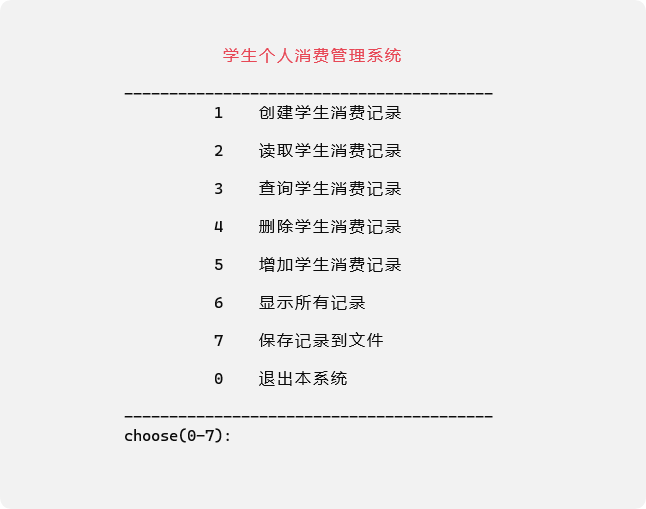题目描述
关键词:路径搜索,深度优先(DFS),广度优先(BFS)
使一台机器人能自主的在场上快速移动是导航组的主要任务。由于比赛场地有较多的障碍物,所以在驱使机器人运动之前,我们需要为机器人规划出一条安全可行的路径。现在以一个二维数组表示一张地图,数组中的元素只有1和0两种状态,其中1表示该位置被障碍物占用,0表示该位置没有障碍物。请编写一段代码,自行输入机器人在场中的起点位置和要到达的终点位置,输出机器人安全能到达终点的可行路线。
注:①机器人目前只能进行前后左右的运动,无法斜着走;
②请输出机器人到达终点需要的行进步数,越少越好;
③为统一评分,初始地图已给出,请直接在原程序上进行路径规划
源代码
#include <stdio.h>
#include <stdlib.h>
#define ROWS 8
#define COLS 8
// 定义坐标结构体
typedef struct {
int x;
int y;
} Coordinate;
// 定义队列节点结构体
typedef struct {
Coordinate coord;
int distance;
} QueueNode;
// 定义队列结构体
typedef struct {
QueueNode* nodes;
int front;
int rear;
int size;
} Queue;
// 初始化队列
void initQueue(Queue* queue, int size) {
queue->nodes = (QueueNode*)malloc(size * sizeof(QueueNode));
queue->front = 0;
queue->rear = -1;
queue->size = size;
}
// 入队操作
void enqueue(Queue* queue, QueueNode node) {
if (queue->rear == queue->size - 1) {
printf("Queue is full.\n");
return;
}
queue->rear++;
queue->nodes[queue->rear] = node;
}
// 出队操作
QueueNode dequeue(Queue* queue) {
if (queue->front > queue->rear) {
printf("Queue is empty.\n");
QueueNode emptyNode = {{-1, -1}, -1};
return emptyNode;
}
QueueNode node = queue->nodes[queue->front];
queue->front++;
return node;
}
// 判断坐标是否合法
int isValidCoordinate(int x, int y) {
return (x >= 0 && x < ROWS && y >= 0 && y < COLS);
}
// 判断坐标是否为终点
int isDestination(Coordinate coord, Coordinate destination) {
return (coord.x == destination.x && coord.y == destination.y);
}
// 进行广度优先搜索
int bfs(int map[ROWS][COLS], Coordinate start, Coordinate destination) {
int visited[ROWS][COLS] = {0}; // 记录是否访问过
int directions[4][2] = {{-1, 0}, {1, 0}, {0, -1}, {0, 1}}; // 上下左右四个方向
Queue queue;
initQueue(&queue, ROWS * COLS);
QueueNode startNode = {start, 0};
enqueue(&queue, startNode);
visited[start.x][start.y] = 1;
while (queue.front <= queue.rear) {
QueueNode currentNode = dequeue(&queue);
Coordinate currentCoord = currentNode.coord;
int currentDistance = currentNode.distance;
if (isDestination(currentCoord, destination)) {
return currentDistance;
}
for (int i = 0; i < 4; i++) {
int newX = currentCoord.x + directions[i][0];
int newY = currentCoord.y + directions[i][1];
if (isValidCoordinate(newX, newY) && map[newX][newY] == 0 && !visited[newX][newY]) {
Coordinate newCoord = {newX, newY};
QueueNode newNode = {newCoord, currentDistance + 1};
enqueue(&queue, newNode);
visited[newX][newY] = 1;
}
}
}
return -1; // 没有找到可行路径
}
int main() {
int map[ROWS][COLS] = {
{0, 0, 0, 0, 0, 0, 0, 0},
{0, 1, 1, 0, 1, 1, 0, 0},
{0, 0, 0, 0, 0, 0, 0, 0},
{0, 0, 1, 1, 1, 0, 1, 0},
{0, 0, 0, 0, 0, 0, 1, 0},
{0, 1, 1, 1, 1, 0, 1, 0},
{0, 0, 0, 0, 0, 0, 0, 0},
{0, 0, 0, 0, 0, 0, 0, 0}
};
Coordinate start, destination;
printf("Please input the start position (x y): ");
scanf("%d %d", &start.x, &start.y);
printf("Please input the destination position (x y): ");
scanf("%d %d", &destination.x, &destination.y);
int distance = bfs(map, start, destination);
if (distance != -1) {
printf("The robot can reach the destination in %d steps.\n", distance);
} else {
printf("The robot cannot reach the destination.\n");
}
return 0;
}在上面的代码中,我们使用了广度优先搜索(BFS)算法来进行机器人的路径规划。首先,我们定义了坐标结构体Coordinate,用于表示二维数组中的位置。然后,我们定义了队列节点结构体QueueNode和队列结构体Queue,用于实现BFS算法中的队列操作。
在bfs函数中,我们使用一个二维数组visited来记录每个位置是否已经访问过,避免重复访问。我们使用一个队列来存储待访问的节点,初始时将起点入队,并将起点标记为已访问。然后,在队列不为空的情况下,不断从队列中取出节点进行扩展。对于每个节点,我们分别判断上、下、左、右四个方向的相邻位置是否合法(即在地图范围内),是否为可通行的位置(即值为0),以及是否已经访问过。如果满足条件,则将该相邻位置入队,并标记为已访问。如果找到终点位置,则返回当前距离。
在主函数中,我们先定义了一个8×8的地图map,其中1表示障碍物,0表示可通行的位置。然后,通过用户输入获取机器人的起点位置和终点位置。调用bfs函数进行路径规划,并输出机器人到达终点需要的步数。
运行截图
当地图为8×8的二维数组,起点为(2, 1),终点为(6, 6)时,可以输入如下案例:
Please input the start position (x y): 2 1 Please input the destination position (x y): 6 6
这样就可以得到机器人从起点(2, 1)到达终点(6, 6)所需的步数。
![图片[1]-C语言编写程序之哨兵的重任-QQ沐编程](https://www.qqmu.com/wp-content/uploads/2023/10/robot.png)












